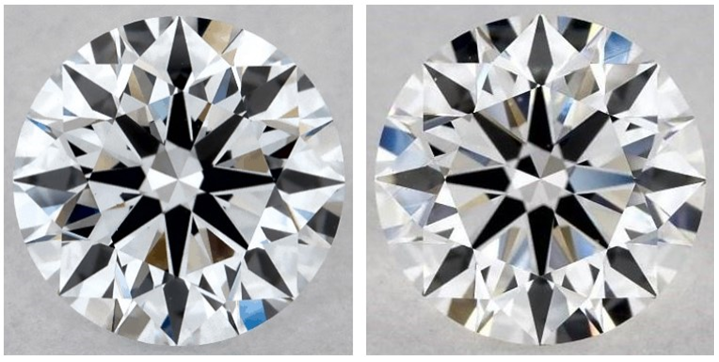בשנים האחרונות צוברים יהלומים שגדלו במעבדה פופולריות הולכת וגוברת — ולא בכדי. עם מראה כמעט זהה לזה של יהלום טבעי, עלות נגישה יותר והתאמה לסטנדרטים אתיים וסביבתיים — רבים בוחרים בהם כחלופה איכותית ליהלומים ממקור כרייה. אך מה באמת ההבדל ביניהם? ואיך הם משתווים לחיקויים כמו זירקוניה או מויסנייט?
יהלומי מעבדה – יהלומים "אמיתיים" במלוא מובן המילה
יהלומי מעבדה אינם חיקוי. הם נוצרים בתנאים מבוקרים המדמים את תהליך היווצרות היהלום הטבעי — כלומר, באמצעות חום ולחץ גבוהים, אך בתוך מעבדה.
ישנן שתי שיטות עיקריות ליצירתם:
-
HPHT (High Pressure High Temperature)
-
CVD (Chemical Vapor Deposition)
למרות שמדובר ביהלומים מעשה ידי אדם, הם חולקים את אותו הרכב כימי כמו יהלום טבעי: פחמן טהור בסידור גבישי זהה.
אפילו נציבות הסחר הפדרלית של ארה״ב (FTC) קובעת באופן רשמי:
“יהלומי מעבדה הם יהלומים אמיתיים לכל דבר ועניין, בשל ההרכב הכימי והפיזיקלי שלהם.”
מה בכל זאת שונה?
ההבדל בין יהלום טבעי ליהלום שגדל במעבדה הוא בעיקר מקור ההיווצרות:
-
יהלום טבעי – נוצר במעמקי האדמה במשך מיליארדי שנים, בתנאים טבעיים.
-
יהלום מעבדה – נוצר תוך שבועות ספורים במעבדה טכנולוגית מתקדמת.
ההבדלים הנראים לעין:
-
מבחינה ויזואלית, בלתי אפשרי להבחין בין השניים ללא ציוד מתקדם.
-
אפילו גמולוגים נדרשים להשתמש בכלים מיוחדים כדי לאתר סממנים עדינים: דפוסי תכלילים שונים, רמות מתח או סימני פלואורסצנטיות מיוחדים.
יהלומים מעבדה לעומת חיקויים: הבדל של שמיים וארץ
לעיתים נוצר בלבול בין יהלומי מעבדה לבין סימולנטים כמו זירקוניה ומויסנייט. אך חשוב להדגיש:
🔹 יהלומי מעבדה הם יהלומים אמיתיים
🔹 זירקוניה ומויסנייט הם חיקויים בלבד
| תכונה | יהלום טבעי / מעבדה | מויסנייט | זירקוניה מעוקבת |
|---|---|---|---|
| הרכב כימי | פחמן טהור | סיליקון + פחמן | תחמוצת זירקוניום |
| מראה | זהה בין טבעי למעבדה | דומה, עם ברק צבעוני | דומה, אך חסר ברק אמיתי |
| מקדם שבירה (אור) | 2.42 | 2.65–2.69 | 2.15–2.18 |
| קשיות (Mohs) | 10 | 9–9.5 | 8 |
| ערך כלכלי | גבוה | נמוך מאוד | נמוך מאוד |
הסבר נוסף על הברק:
-
יהלום אמיתי מפיק ניצוץ מאוזן ואלגנטי (אש ולובן).
-
מויסנייט בוהק מדי – עם הבזקי צבע עזים, שעלולים להיראות מלאכותיים.
-
זירקוניה משדרת אור רך וכתמתם — לעיתים נראית "עמומה" או "פלסטית".
האם כדאי לבחור יהלום מעבדה?
התשובה תלויה בהעדפות האישיות שלך:
✅ אם אתה מחפש יופי, עמידות, מחיר ומראה מושלם — יהלום מעבדה בהחלט עונה על כל הציפיות.
✅ אם חשוב לך היבט טבעי, נדיר, היסטורי וסנטימנטלי — יהלום טבעי יספק רובד נוסף של עומק ומשמעות.
✘ אם אתה שוקל חיקוי כמו זירקוניה או מויסנייט – דע כי מדובר באבן שאינה יהלום אמיתי, עם ערך מוגבל מאוד.
לסיכום:
יהלומי מעבדה הם יהלומים אמיתיים. הם אינם חיקוי, אלא תוצר חדשני ומרשים של טכנולוגיה מתקדמת. לעומתם, סימולנטים כמו זירקוניה ומויסנייט הם אבנים דקורטיביות בלבד — שונות לחלוטין מהיהלום, גם אם הן נראות דומות מרחוק.
ב־Get-Jewel.com אנו מציעים לך את שתי האפשרויות — יהלומים טבעיים ויהלומי מעבדה — עם שקיפות מלאה, תעודת גמולוגיה, וליווי מקצועי שיבטיח שתרכוש את האבן שהכי מתאימה לך.


